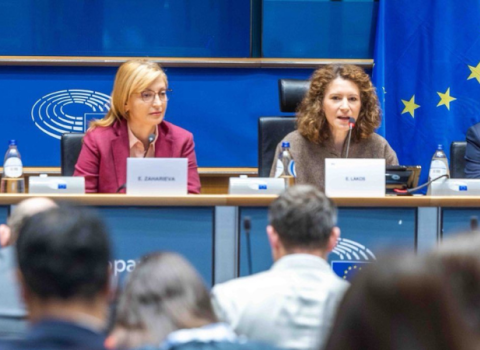As governments try to stimulate innovation, they struggle with how to coordinate policies across departments. The OECD tracks how they are managing it

Dominique Guellec, head of the science and technology policy division at the Organisation for Economic Cooperation and Development
Here’s a policy puzzle: let’s say you’re working on a national programme to develop artificial intelligence. If successful, you know, AI will help the health ministry improve care. It will help the agriculture ministry boost crop yields, the defence ministry fight wars, and the energy ministry plan electricity grids. So, how do you make sure they’re all involved, and the entire economy benefits?
“It’s a universal problem. How do you coordinate so many diverse streams of demand and supply of innovation?” observes Dominique Guellec, head of the science and technology policy division at the Organisation for Economic Cooperation and Development. Increasingly, technology developments in one field affect other, seemingly unrelated areas, while certain general purpose technologies affect most if not all fields. Managing that “spill over” is an ever-growing challenge in innovation policy development: “it’s in the air du temps, the zeitgeist.”
Guellec and his OECD colleagues have been studying different ways of handling this problem for years - and now, the European Commission has also put it on the front burner. As part of the proposal for the EU’s next seven-year budget, it has given high priority to achieving synergy among different innovation efforts - from Horizon 2020 to the Common Agricultural Policy. This is hard, as the vicious turf battles among its 34 directorates-general demonstrate, and whether the Commission will succeed is an open question. But it can take heart from the wide range of experience with this problem around the world.
One approach is the American way, which Guellec calls primarily “vertical”, with each department, from energy and defense to agriculture, running its own R&D programmes in separate silos. You might think this the opposite of synergy, but there is a form of coordination. In basic research, that comes partly from the National Science Foundation, which sprinkles grants across all disciplines. Then, too, the universities and others receiving the grants have their own cross-disciplinary strategies to spread the knowledge from sector to sector. In addition, Congress digs into the budgets of each agency annually. And finally, the White House also sees the bigger picture. Most recently, on 10 May it announced the formation of the Select Committee on Artificial Intelligence, an interagency group to coordinate developments in AI. The committee includes the heads of the main research agencies and will be overseen by the Office of Science and Technology Policy of the White House. You wouldn’t necessarily plan a system this way, but it has clearly worked to date.
Another typical model is the Nordic system, in which a national research council distributes grants across all disciplines, but it pairs with a national innovation agency that supports translation of research outputs across economic sectors. There are further coordinating elements, for instance, in Finland a council of ministers, chaired by the prime minister, meets periodically to develop a national innovation strategy.
In April the UK went one step further, merging seven research councils with the national innovation agency, Innovate UK, to form a single body, UK Research and Innovation. The UK has a very strong tradition (now enshrined in the act that led to the formation of UKRI) that the government does not have any direct say in what research projects get funded, however a new framework was published in May, describing how central government will interact with UKRI is setting the strategic, long term direction of research and innovation policy.
There is yet another approach in China, with its long-term, centralised plans. Typical of this is the national AI strategy announced in 2017, setting the goal of being the global leader in artificial intelligence by 2030. Such plans are developed across several ministries, controlled at the centre, and budgeted systematically. But, Guellec notes, they also build in flexibility, so plans can be adjusted frequently, as the work proceeds and as lessons are learnt at each stage.
Which system works best? There is no one size fits all – as each country has developed its own system from its own history and inter-ministerial relations.
What is clear, says Guellec, is that some part of the government needs to function as a “hub” for innovation development, for instance, to promote the development of core AI technology and spread the word about its importance to other parts of the government. That’s because there are always some basic technology components that all sectors of the economy need, but no one sector will pay for on its own.
But beyond that it is an open question whether innovation policy is best directed by councils or legislatures or national plans. “I don’t think there’s a magic bullet,” Guellec says.





 A unique international forum for public research organisations and companies to connect their external engagement with strategic interests around their R&D system.
A unique international forum for public research organisations and companies to connect their external engagement with strategic interests around their R&D system.